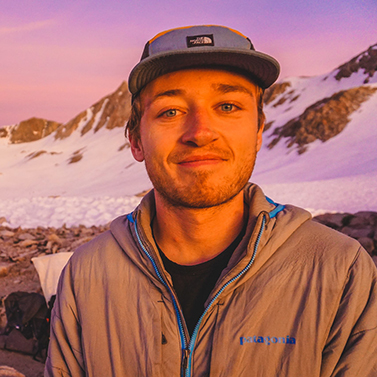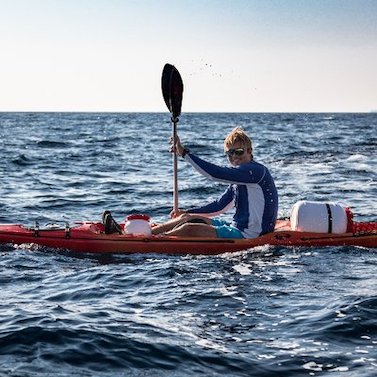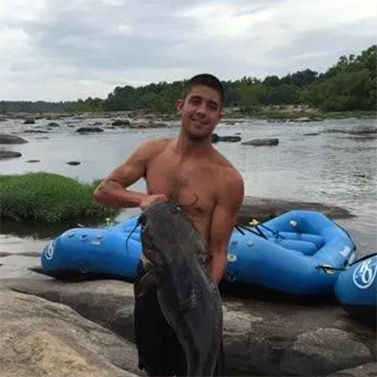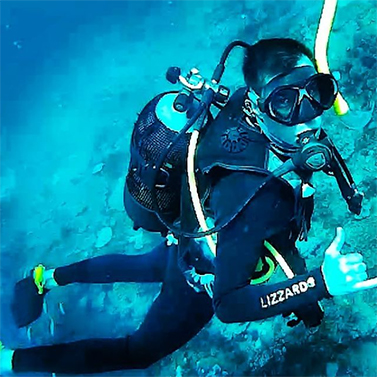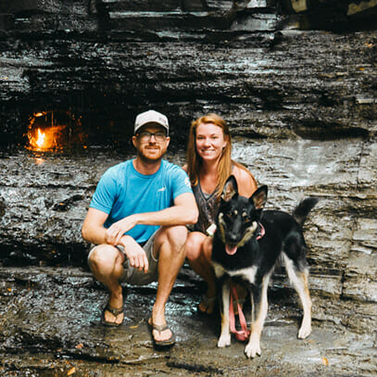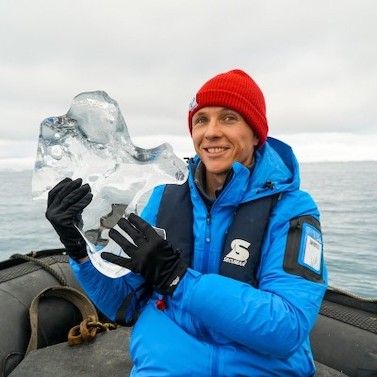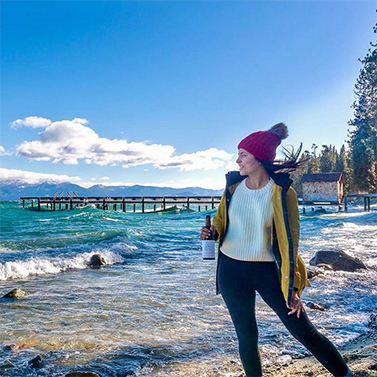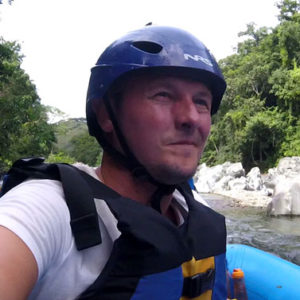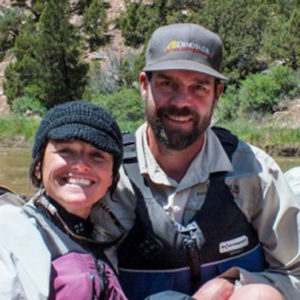Things to keep in mind when bringing kids to outdoor activities
The outdoors offers kids endless chances to explore and be adventurous, but it’s not always safe. And, in this age of high-tech entertainment and with a worldwide pandemic raging, our kids aren’t always anxious to get out past the front door. We asked adventurers to weigh in on some important things to consider when taking children into the great outdoors, and here’s what they had to say:
David De Haan
After spending most of his life on or near the water rafting, fishing, and sailing, David De Haan started the website Fantastic Kayaks, where he helps beginning kayakers with tips and advice.
Show them how fun being outside
First, start small and make it exciting. If your children love being inside, they may not enjoy outdoor activities as much as you expect them to. The last thing you want is to make them miserable. The goal is to show them how fun being outside is. Introduce them gradually and don’t force anything.
Another thing, find something they love and work with that. If you notice that the kids love the water, do activities that involve that. Take them swimming, canoeing, or paddleboarding. This will make it easier for them to want to be outside more. If you have no idea what they like, try different things and note their reactions.
My kids love the water and, fortunately, so do I. We got them started on watersports when they were young and they love it. They don’t need any persuasion to go outside.
Keep in mind the safety and the balance of benefit over risk
In the ongoing age of the pandemic, there are several things parents need to keep in mind that we would never have dreamed about a year ago when bringing our kids to outdoor activities. Like for example:
- How many people are going to be there? Will there be overcrowding? Will there be some kind of control over numbers?
- Will social distancing/mask-wearing/preventative protocols be enforced/observed – particularly among the adults
- How much contact will there be among the kids?
- Where will people be coming from?
- Will facilities be shared? Sanitized regularly?
As parents, we do not want our kids to miss out on the outdoor activities they enjoy as part of their childhood and need as part of their social development. But neither do we want to put them, ourselves, and our families at risk. What we should keep in mind first and foremost is safety and the balance of benefit over risk.
Kids get cold easier
You can never bring enough layers. It’s better for them to be overdressed and have to remove layers than to be cold and uncomfortable. Always bring way more layers than you think you’ll need. Extra socks, hats, sweaters, and scarves can save a trip.
Short hair is easier to clean on the go
We keep my five-year-old daughter’s hair chin-length because it’s easier to clean while we’re traveling. I’m sure she’ll want to grow it out in a year or two when she starts thinking about those types of things, but until she asks, I’ll keep it short for the sake of our day trips.
When you have young kids, always be prepared to leave early if you have to
One of the realities of parenthood is that you don’t always get to stay for the entire event. You have to accept that before you go anywhere, especially outdoors. I’ve seen parents get very frustrated because they had to leave a picnic or BBQ due to a sick or tired kid, but it is what it is. As long as you manage your expectations and understand that you might have to leave before the event is over, you’ll always have a good time.
Piyushi Dhir
Piyushi Dhir is a businesswoman by profession and a writer by passion. Managing the care of 4 generations of her family has allowed her to develop a unique perspective on healthcare. Find her at Helpandwellness.com
Outdoor fun certainly needs some planning
Heading out for a day of outdoor fun certainly needs some planning when taking along your kids. Here a few points to keep in mind:
- Weather conditions can make or break any outdoor adventure but even more so when you have your youngsters with you. During winter months make sure you pack spare clothing just in case they get wet, an extra layer for extra warmth, and a flask with hot chocolate for a warm sugary treat. During the hotter seasons, layer them up so you can remove or add layers as needed – remember kids can overheat much more easily than adults. Having strong sunblock is a must especially for all kids.
- Kids are prone to slips and bumps. Having a first aid kit with you with all the basics is essential for peace of mind. Pack bandages made especially for kids with smiley faces, unicorns, or just brightly colored to help ease them back into the fun mood after a mini-accident.
- When your kids are hungry it becomes the mission to find the nearest restaurant or cafe. Pack snacks in your backpack, or, for longer days out, make up a basket of food for a picnic. By preparing food beforehand, you will make sure you don’t have to halt the day early.
Prepare a master list for outdoor activities
As a mom of two, I know that outdoor activities are very important for our kids to develop independence, social skills, and self-confidence as well. However, with the pandemic happening, it’s become harder for our kids to participate in anything outdoors. So, here are my tips:
- Brief your kids about some rules. Before going out, make sure you talk to your kids about following the physical distancing rule. Also, remind them to be more mindful of the things they touch outside, and always carry their own hand sanitizer as well. More importantly, make sure your kids know that they have to keep their masks on at all times. While you may assume that your kids might already know the rules or if you’ve discussed them before, it’s still better to have a short briefing before you actually go out. This way, their minds are refreshed on the do’s and don’ts.
- Choose low-risk activities. When choosing what activities to do outside your home, go for those that don’t involve a lot of people. Personally, I recommend going fishing, hiking, or taking a picnic in your yard. Other activities you can do include biking, boating, or drive-in movies.
- Prepare a master list for outdoor activities. Outdoor activities with your kids require planning. And since you’ll be doing it multiple times, it’s good practice to have a pre-written list of things to do and bring before the activity. That way, you don’t have to constantly remind yourself of everything you need to do before your kid goes out. It gives you peace of mind and it can also reduce the prep time you need beforehand since all you have to do is follow the list.
Make it fun and engaging
Parents need to be very wary about a lot of things when taking their kids to outdoor activities. A few tips parents should take in are:
- Ensure that they are in less crowded places to ensure proper social distancing.
- Ideally, they should be free to explore their surroundings but at a distance where you can keep a close eye on them.
- If you take them sporting, always ensure that the kids wear the respective gear required in the sport. The safety gear may entail footwear, helmets, foot paddings, shin guards.
- If it’s cycling, then you need to make clear the traffic rules. They should include observing traffic lights, avoiding the sidewalks, and looking out for cars making turns or leaving driveways.
- When going camping, you should ensure that you’ve carried extra clothes and blankets just in case the weather gets chilly. Also, essential to have with you is a first-aid kit, proper hiking shoes, sunscreen, and food and water.
- When you take them swimming, ensure that they always have on life jackets even when you don’t plan on letting them get in the water. Accidents happen, and a kid may fall inside a pool or wander off into the ocean waters.
While these activities need to be safe for your children, you should also make them fun and engaging to be a part of at the same time.
Simon Elkjær
Simon Elkjær, Chief Marketing Officer, avXperten.
Always guarantee the safety of the place
A few things to keep in mind if you bring your child out to play is to always guarantee the safety of the place you’re going to and keeping an emergency kit within your reach. As the pandemic is still very much among us, I wouldn’t recommend taking your kids out but you can enjoy the sun from your backyard. Before you bring out your kids to play, make sure that your backyard is a clean and safe space to play in. Double-checking beforehand helps minimize the chances of your child getting hurt or other emergencies.
It’s also best to keep an emergency kit within your reach at all times. Doing so will let you respond quickly and more efficiently. If emergencies occur, parents and guardians should keep a clear mind in order to give the children the care they need.
This is a crowdsourced article. Contributors are not necessarily affiliated with this website and their statements do not necessarily reflect the opinion of this website, other people, businesses, or other contributors.







